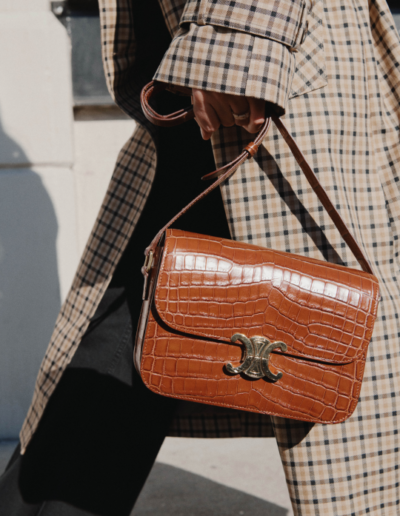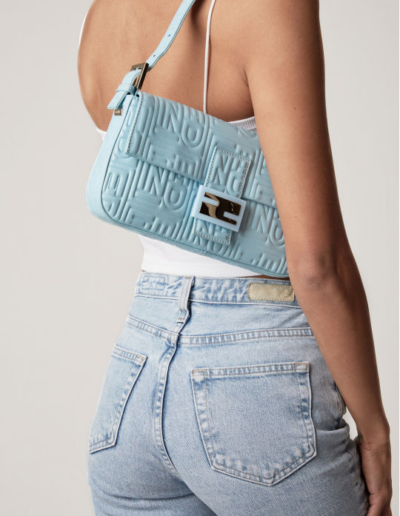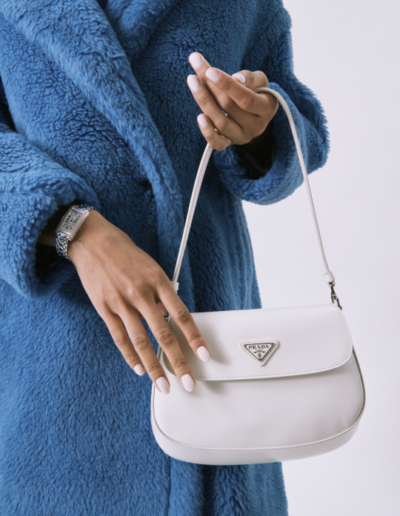DESIGNER 101
Van Cleef & Arpels 101:
A History
By Karen S. Jan 25, 2021
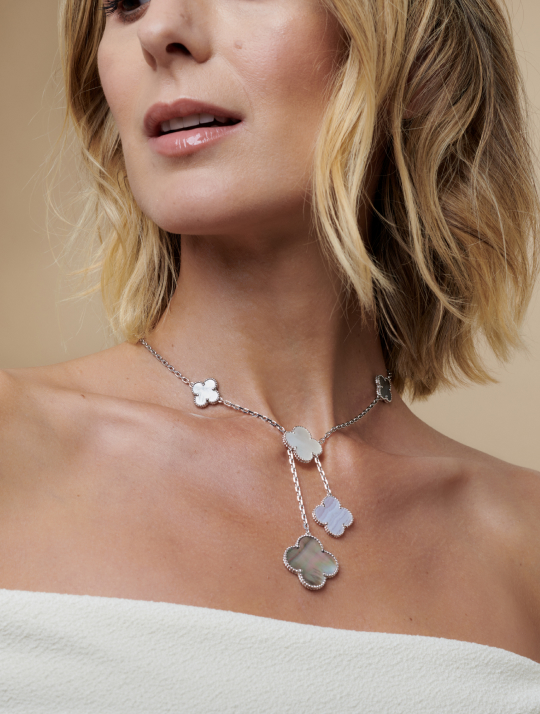
The beginnings of the luxury Maison Van Cleef & Arpels dates
all the way back to the 19th century, making VC&A one of the oldest fine jewelers in the world. But, how exactly did it get its start, and what made it into the household name it is today? Dive into the rich and complex history of the Parisian jewelry house with our 101 guide.
Establishing the Maison Van Cleef & Arpels
In the 19th century, the main goal of marriage was to create an alliance between families, and it was these alliances that fostered strong economic liaisons.
One such alliance began in 1895, when the daughter of a gemstone dealer married the son of a stonecutter and diamond dealer. The daughter was Estelle Arpels, and the son was Alfred Van Cleef. Both wife and husband believed in the importance of family and had a deep love of gemstones.
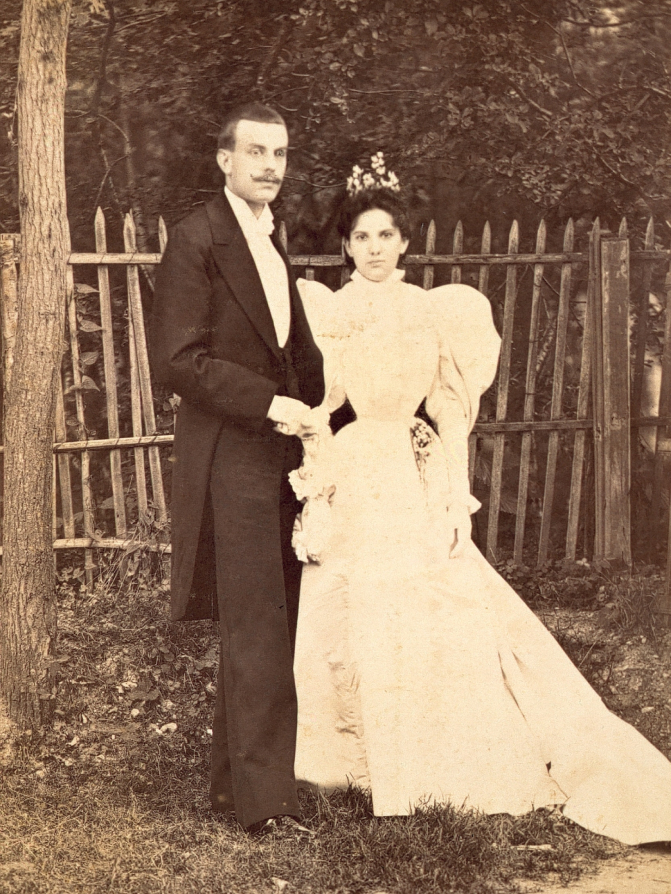
Estelle Arpels & Alfred Van Cleef, Courtesy of Van Cleef & Arpels Website
In 1906, with their love for gemstones and passion for jewelry making, Alfred and his brothers-in-law opened the first Van Cleef & Arpels boutique in the center of Paris, 22 Place Vendome. It was a prime location across from the Hotel Ritz, which welcomed European businessmen and aristocrats. This location was (and still is) the center of fashion and luxury in Paris.
The Style & Methods of Van Cleef & Arpels
As Van Cleef & Arpels became more well-known for having the most exclusive jewelry, two additional family members joined the business, and they were able to launch boutiques in resort locations around France. All of the family members had various talents that balanced each other out and helped them grow.
In the 1920s, Van Cleef & Arpels began making jewelry in the art deco style. This style consists of geometric designs with the use of diamonds, gemstones, and platinum. In 1922, the Maison was inspired by the discovery of the tomb of Tutankhamun and created many designs. The most extraordinary of these designs are the flat, highly articulate bracelets depicting Egyptian imagery.
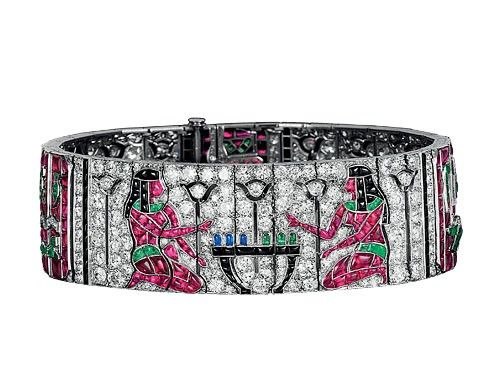
Jewelry inspired by Egyptian motifs, source unknown
Many designs by Van Cleef & Arpels, also referred to as VCA, similarly were inspired by other cultures including Japan, China, and India, creating masterpieces in all aesthetics.
In 1926, the VCA family made Alfred the company’s artistic director, and in the 1930s Alfred enlisted the help of his daughter, Renée Puissant, as well as jewelry designer René Sim-Lacaze. This duo created several of the Maison’s iconic designs, including:
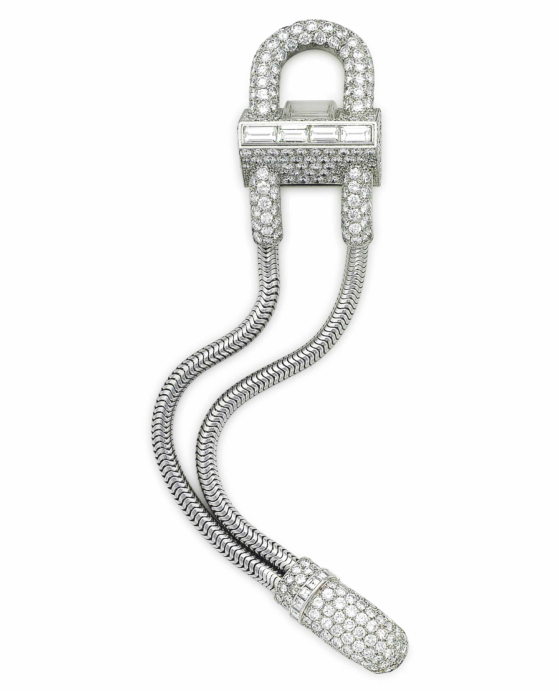
The Cadenas Watch, courtesy of Christie’s
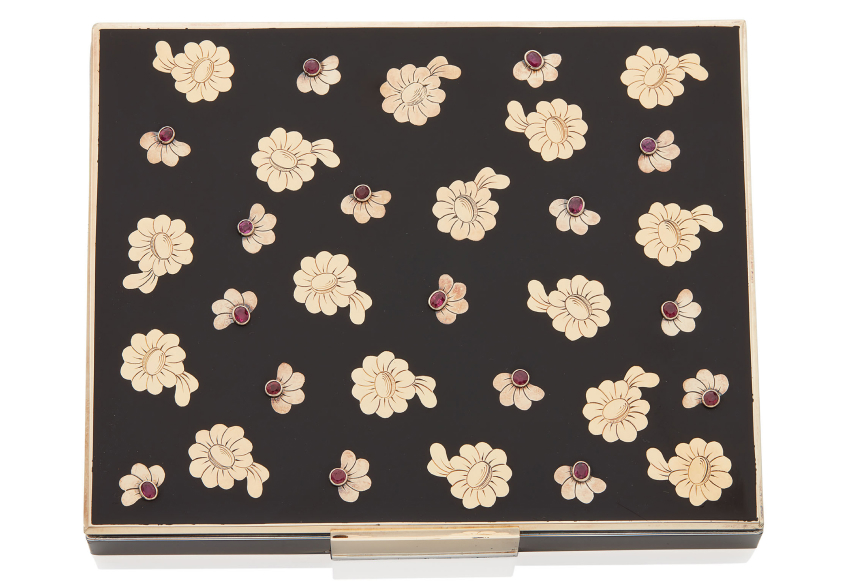
The Minaudière, courtesy of Christie’s
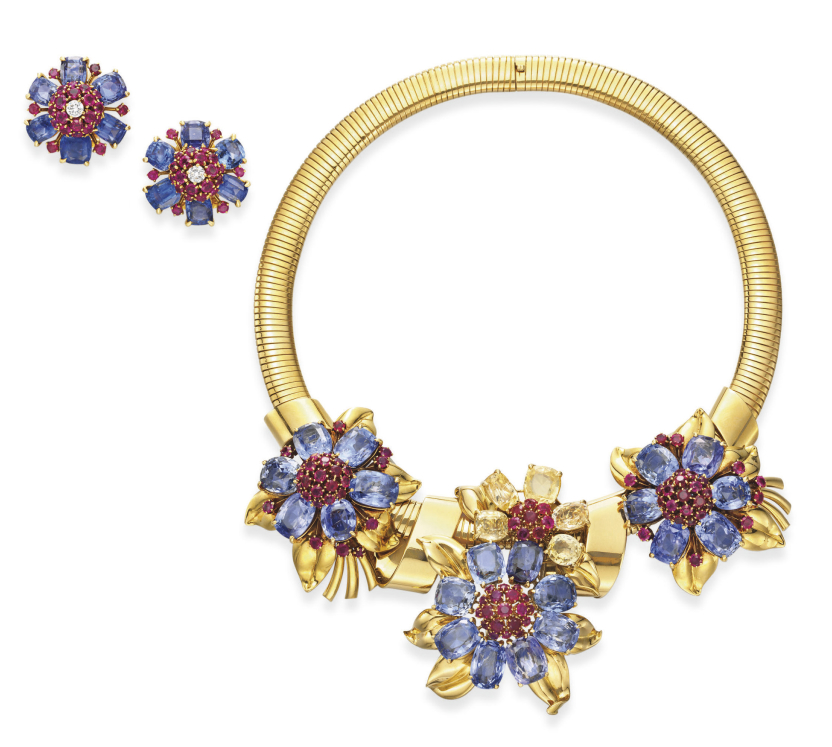
The Passe-Partout, courtesy of Christie’s
In the 1930s, Alfred Van Cleef and Julian Aprils developed a technique for setting gemstones without any visible prongs. Using primarily sapphires and rubies, the technique was to cut a grove on the side of the gems by a highly skilled lapidary to fit exactly into place on rails. Each square-shaped stone was slid into place with an intricate latticework of gold rails. This type of setting left little room for error. Stones had to be precision cut and well-matched in color in order to fit together snugly and to create a ribbon-like appearance.

The Mystery Set™, courtesy of Christie’s
International Expansion
During the mid-1930s and 1940s, the next generation of the firm began to emerge. Julien’s three sons, Claude, Jacques, and Pierre, learned the business from their father and uncle. Each son took a different post in the world, Jacques took over as director of Van Cleef & Arpels in Paris, while Pierre introduced the company to the Japanese market. And finally, Claude, with the assistance of his uncles Julien and Louis, ventured to the United States. This was a time of great growth and expansion for the company.
The Maison expanded with the opening of boutiques in Japan and China. And, shortly after opening up a New York boutique in the 1940s, the Spirit of Beauty clip was created. This brooch was of a wings fairy and was intended to be a symbol of hope.

The Spirit of Beauty, courtesy of Christie’s
It was during this same period and sparked by his friendship with the co-founder of the School of American Ballet, that the firm’s designer at the time, Maurice Divalent, created the iconic ballerina brooches. It was also rumored that he gained his inspiration from the flamenco dancers of New York’s Lower East Side. Here are some examples:

Danseuse Brooch, courtesy of Bonhams
From Occasion Wear to Everyday Jewels
After four decades of stone intensive evening jewelry, the Maison decided in the 1950s to create more items that could be worn in the daytime, pieces that would appeal to a younger and aspiring affluent audience. This brought on the creation of playful animal clips made mostly of gold and scattered with both precious and semi-precious gemstones.

Gold & Gem Set Brooch, courtesy of Sotheby’s

Love Birds Brooch, courtesy of Bonhams
During the 1950s, Van Cleef & Arpels perfected it’s zipper inspired convertible necklace, considered one of the most innovative pieces of jewelry to ever be created. This necklace can be worn as a necklace as a bracelet by detaching the upper part from the remaining section and then zipping it up to become a bracelet.

Ruby & Diamond Zip Necklace, courtesy of Christie’s
Van Cleef & Arpels in the Mid-20th Century
Throughout the 1950s and 1960s, the Maison had some very important commissions. One such commission was from Prince Rainier of Monaco. He ordered a magnificent diamond and pearl parure as a wedding gift for Princess Grace. The parure consisted of a necklace bracelet and ear clips. Additional commissions came from the likes of Barbara Hutton and Empress Farah Pahlavi of Iran.
Created in 1968, Alhambra was inspired by the four-leaf clover and regarded as a symbol of luck, is the Maison’s most iconic design. This distinctive motif has been embellished with several stones throughout the years, including mother of pearl, turquoise, diamond, onyx, and carnelian, to name a few. This collection is still in production, and the Maison comes out with a limited-edition holiday piece every year.

Vintage Alhambra 20 Motif Necklace

Vintage Alhambra 10 Motifs Necklace
In the 70’s jewelry was reflective of what was happening around the world. The use of bold and vibrant colors saw the use of coral, malachite and turquoise. The Maison launched a collection to honor the Christmas rose called Rose de Noel. This flower motif was set with pink coral and diamonds.
During the 1980s, the Maison’s designs mirrored fashion with the creation of the Col Claudine necklace. It was fashioned as a collar and made up of fine woven gold and adorned with diamond floral motifs.

Diamond Necklace & Earrings Set, courtesy of Christie’s
Every decade has seen the Maison launching new design ideas. The nineties saw new Mystery sets, including the Galilee mysterious clock. This clock was designed with a diamond polar bear and has concealed mechanisms.
Modern-Day Van Cleef & Arpels
In early 2000, Van Cleef & Arpels launched the popular Frivole design. For its 100th anniversary in 2006, the Maison launched its most extensive high-end jewelry collection to date, comprising 100 pieces that feature rare stones. In addition, it put out a limited edition 100th Anniversary edition of the mother-of-pearl Magic Alhambra necklace.

Alhambra 100th Anniversary Pendant Necklace
In 1999, Richemont, the Swiss tobacco and luxury goods group, acquired a 60% stake in the company. The remaining 40% was split between an Italian firm and the heirs to Monsieur Claude Arpels. Then in 2001, the Richemont group acquired an additional 20% of the company, and by 2003, they became the fuller owner of the Van Cleef & Arpels brand.
Now, over 120 years after the first boutique opened its doors, Van Cleef & Arpels remains iconic and timeless and has secured for itself a lasting legacy as one of the finest jewelry houses in the world.

